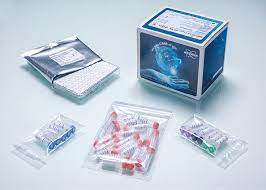Accurate pathogen identification is one of the basic tasks of any microbiology laboratory. Conventional, culture-based methods of bacterial identification and antimicrobial resistance testing are considered the gold standard in microbiology. In recent years, classical microbiological methods have been supplemented with modern analytical and molecular methods. With regard to the quality and speed of pathogen identification, the introduction of mass spectrometry techniques into routine microbiological diagnostics work-up has been revolutionary. Within a short time in many laboratories, MALDI TOF MS systems have almost completely replaced conventional biochemical pathogen identification. Time has shown that these changes in microbiological diagnostics have significantly reduced the time needed to produce test results, and this has had an obvious clinical impact on the successful treatment of the patient.

Rapid Microbial Identification

What is MALDI TOF Technology?
The latest generation tool used in clinical microbiology to identify microorganisms is mass spectrometry – MALDI-TOF MS. MALDITOF uses mass spectrum analysis to list molecules in a sample assaying the mass-to-charge (m/z) ratio. Matrix Assisted Laser Desorption and Ionisation (MALDI) is a phase in which a sample undergoes ionisation from the energy of a nitrogen laser beam. Excited molecules are transferred from the matrix to the analyte and cause desorption of the newly ionised allotments. The TOF technique measures the time of ions’ flight using the fact that ions of different masses move at different speeds. Bruker has come up with latest MALDI Biotyper® Sirius and Sirius one systems based on MALDI Tof MS which has proven to be most advanced system for routine microorganism identification worldwide.

Which micro-organisms can be identified using MALDI Biotyper® Sirius and Sirius one?
In MALDI-TOF, identification of the microorganism is based on a comparison of a mass peaks which are specific for every species, with the patterns in the database. This unique protein profile is called a molecular ‘fingerprint’. It ensures that the obtained result is highly specific, while the small amount of tested material needed to perform the analysis guarantees high sensitivity of the method.
Library database is the heart of any MALDI ToF based system. Vast database of more than 4000 species makes Bruker’s MALDI Biotyper Sirius/Sirius one an exclusive system that is capable of identifying bacteria, yeast, filamentous fungi and mycobacteria including non-tubercle mycobacteria.

.jpeg)
.jpg)






